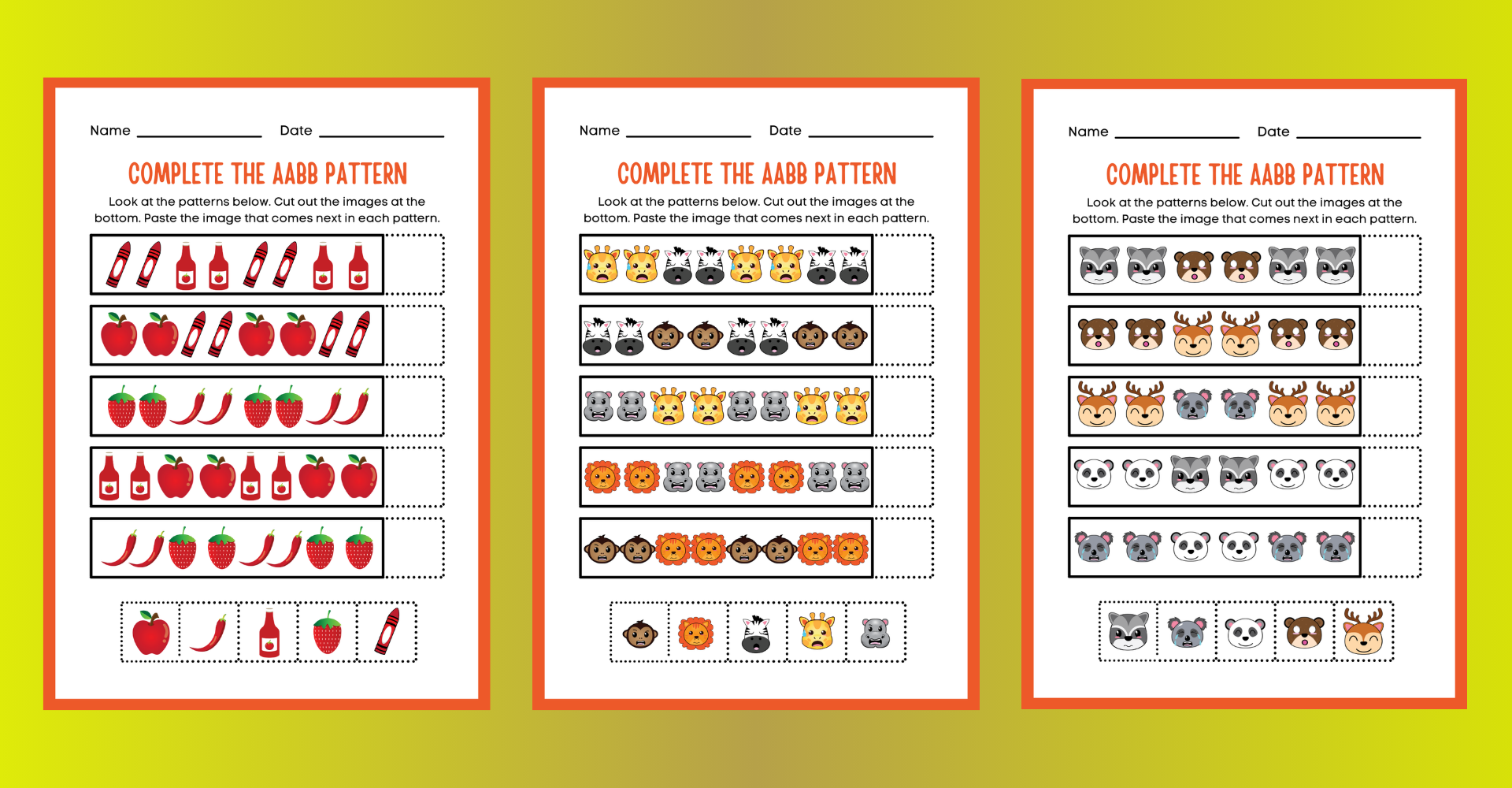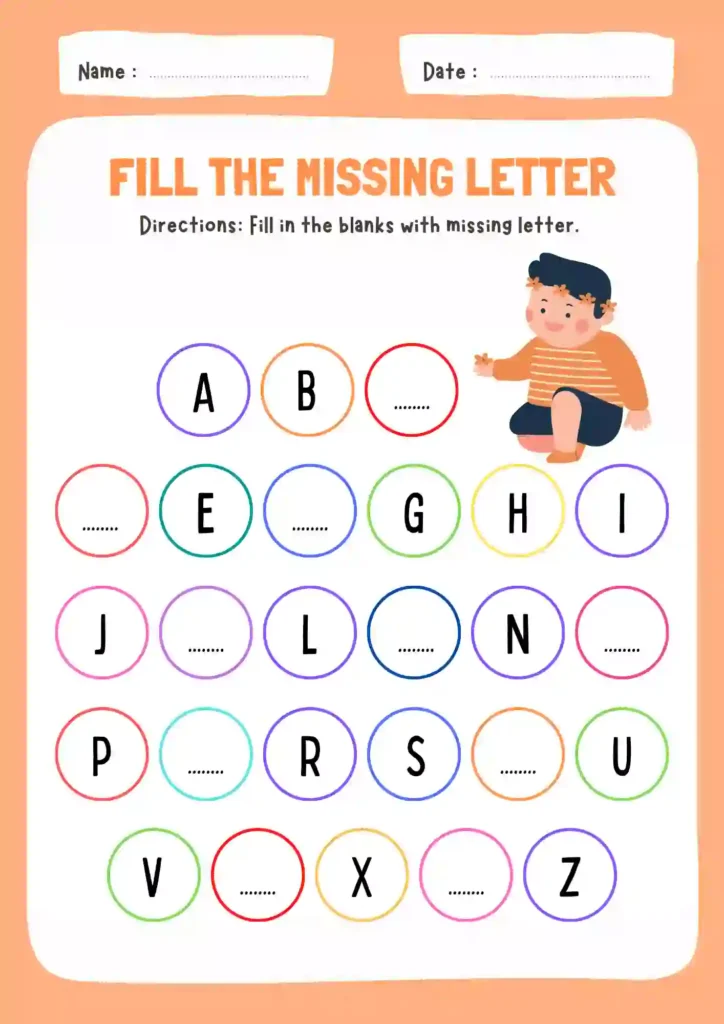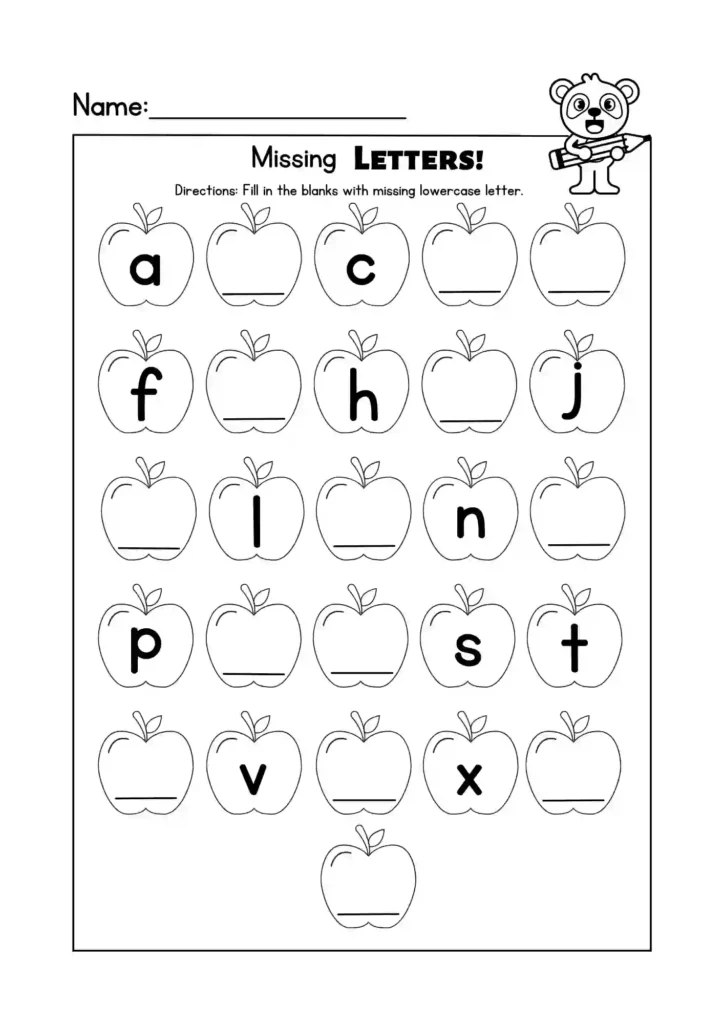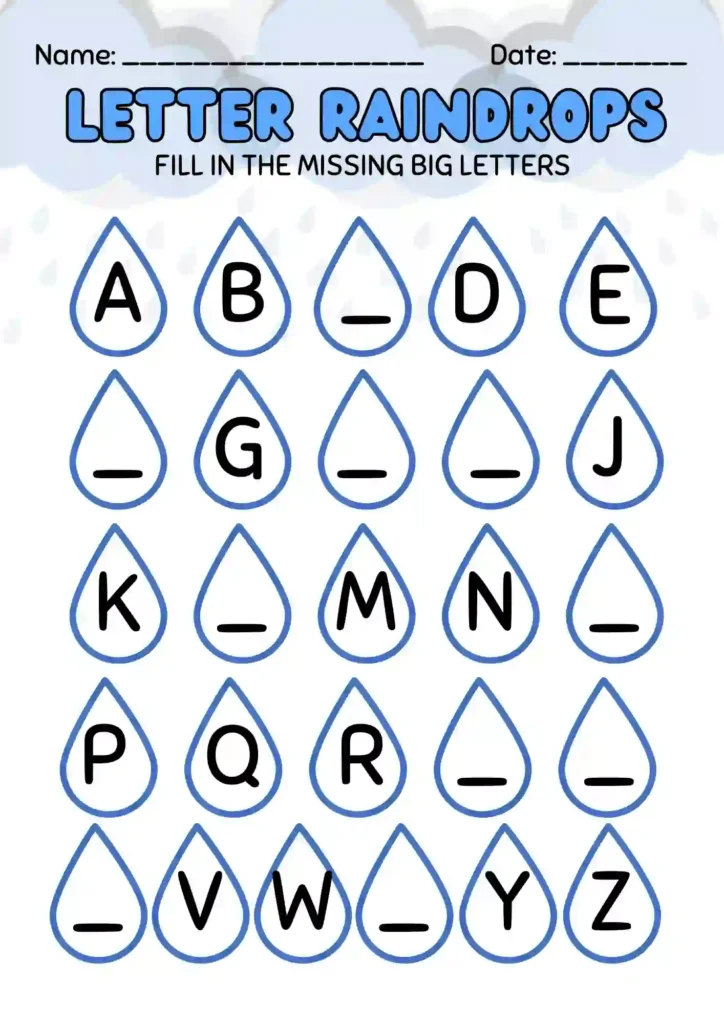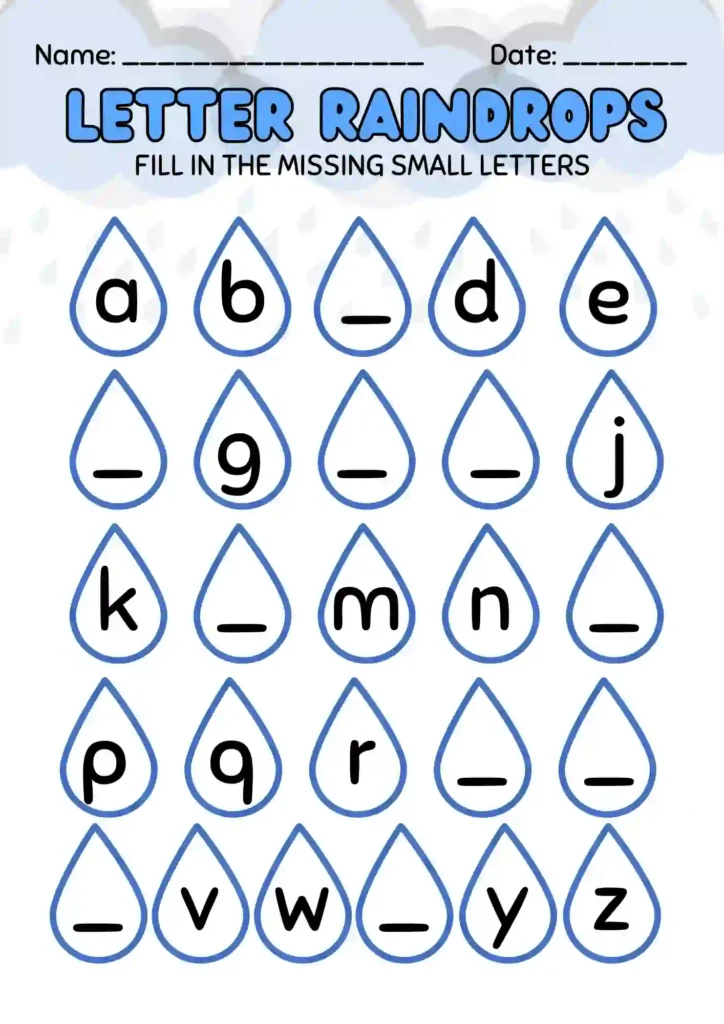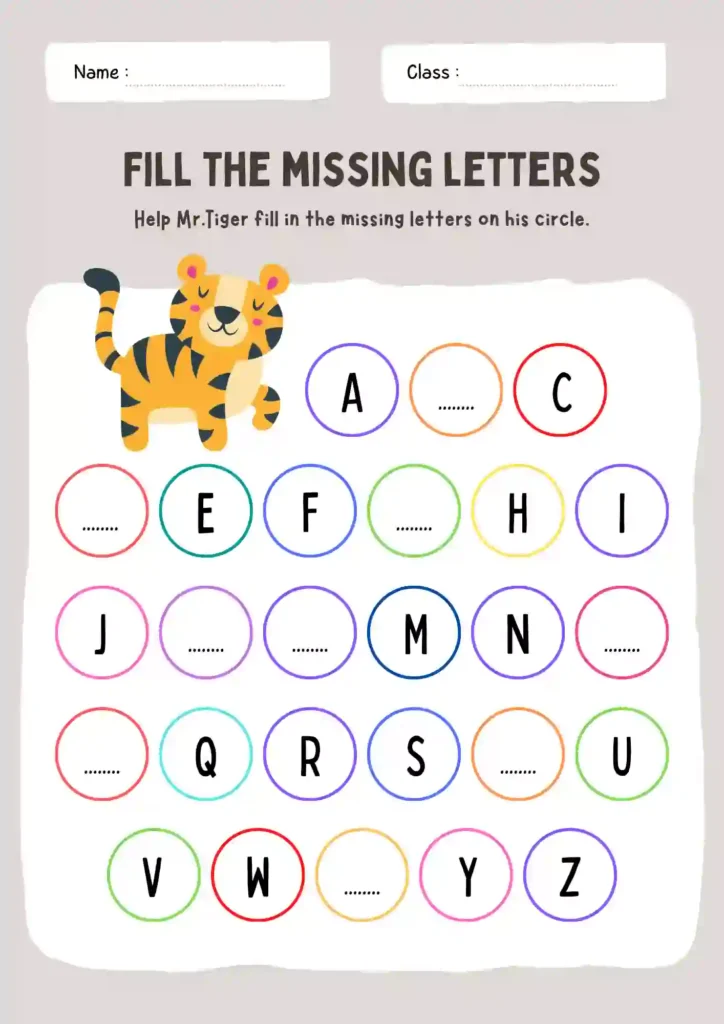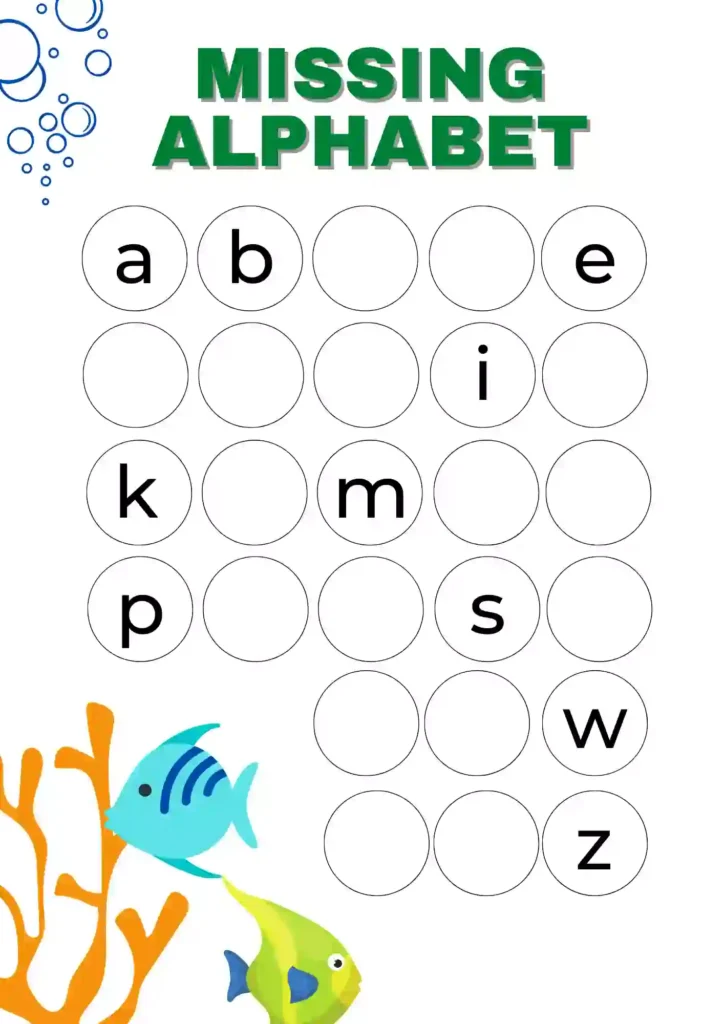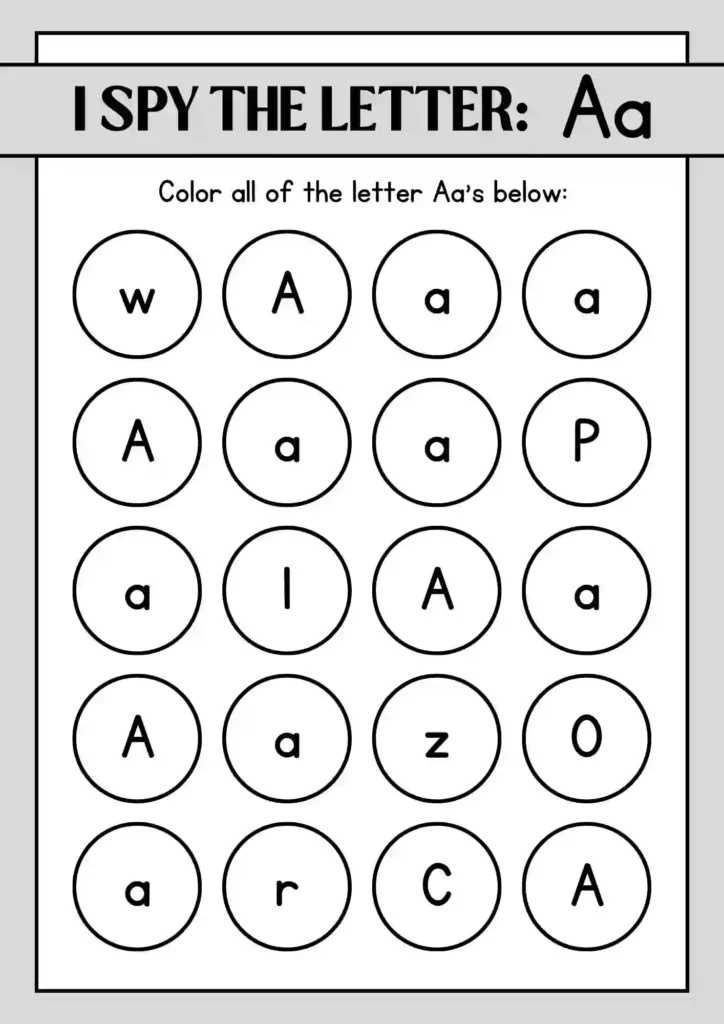Welcome to our collection of “Missing Alphabet Letters Worksheet for LKG.” These special worksheets were made with care to help young children just starting school learn the alphabet, recognize letters easily, and put letters in the right order. When kids do these fun activities, it helps them start learning to read and write in a happy and engaging way. It’s like playing a game that helps you get ready for school! We hope your child enjoys learning with these special worksheets made just for them.
Missing Alphabet Letters Worksheet for LKG Details:
| Feature | Details |
|---|---|
| Format | Downloadable PDF |
| Number of Pages | 6 |
| Content | Missing Alphabet Letters Worksheet for LKG Kindergarten. |
| Illustrations | Yes, playful and age-appropriate |
| Suitable For | Nursery, Lkg & Ukg |
| Printable? | Yes |
Learning Objectives:
The primary goal of our Missing Alphabet Letters Worksheets is to support early literacy development by focusing on key areas:
- Letter Recognition: Children will practice finding and recognizing each letter of the alphabet. This helps them become familiar with letters, which is important for reading. By engaging with different fonts and styles of letters, kids will also learn to recognize letters in various contexts.
- Sequencing Skills: These activities will help kids learn the correct order of the letters in the alphabet. Understanding the sequence of letters is a key part of learning to read and write. Additionally, recognizing patterns in letter sequences can enhance their overall cognitive development. You can try our Number Sequencing Worksheets.
- Problem-Solving Abilities: When kids look for the missing letters in a sequence, they will practice their logical thinking and problem-solving skills. This encourages them to think critically and find solutions, which is a valuable skill in many areas of life. Working through these challenges can also boost their confidence as they see their progress.
- Vocabulary Building: As children engage with the worksheets, they may encounter new words associated with the letters they are learning. This exposure helps expand their vocabulary and improves their language skills, making it easier for them to express themselves.
- Social Skills: Working on these activities with others can foster teamwork and collaboration. Children can share their thoughts, help each other, and celebrate each other’s successes, building important social skills and friendships.
Who is this for?: These worksheets are perfect for children in Lower Kindergarten (LKG). These worksheets are designed for young learners in LKG, UKG, nursery, preschool, and kindergarten. They are perfect for use in the classroom, at home, or in any educational setting where foundational math skills are being developed.
Materials Needed:
- Printed copies of the Missing Alphabet Letters worksheets.
- Crayons or colored pencils.
- Alphabet chart (optional) for reference.
How to Use:
- Introduction: Start by introducing the alphabet to your child or students. Explain that in this activity, some letters are missing from the alphabet sequence. Their job is to find those missing letters and fill in the blanks.
- Practice: Begin with a guided practice session. Show them a few examples of the alphabet with missing letters. Demonstrate how to find the missing letters and encourage the children to say each letter out loud as they write it down. This will help them remember the letters better.
- Independent Work: Once they understand the task, let the children work on the rest of the worksheets by themselves. Remind them to take their time and think carefully about each missing letter. It’s okay to pause and think!
- Review: After everyone has finished the worksheets, come together to review the answers. Go over each one and talk about any difficulties they had. Make sure to celebrate their successes, no matter how small! This will help build their confidence and make learning fun.
- Extension: If the children finish early or want more of a challenge, you can create your own alphabet sequences with missing letters for them to fill in. This will help reinforce their learning and keep them engaged.
- Variation: For older children or those who need more of a challenge, you can have them write the missing letters in alphabetical order instead of just filling in the blanks. This will test their knowledge of the alphabet sequence.
Tips:
- Use Visual Aids: One great way to help children who might struggle with recognizing letters is to use an alphabet chart. This chart can serve as a helpful visual tool, allowing kids to see the letters clearly. It’s like having a picture guide that makes it easier for them to learn and remember the letters.
- Interactive Activities: Hands-on activities can make learning fun and engaging! Try using letter magnets or flashcards. These tools allow children to physically play with the letters, which can help them recognize and arrange them better. By touching and moving the letters around, kids can strengthen their understanding of letter recognition and how to put them in order.
- Encourage Group Work: Another effective strategy is to have children work together in pairs or small groups on worksheets. This not only makes the learning process more interactive, but it also encourages them to talk and share ideas with each other. Working together helps them learn from one another, which can boost their confidence and communication skills.
- Use Technology: Consider integrating educational apps and games that focus on letter recognition and phonics. Many interactive programs are designed specifically for young learners and can make practicing letters exciting. Just be sure to balance screen time with hands-on activities.
- Provide Varied Learning Materials: Offer a range of learning materials, such as puzzles, coloring sheets, and worksheets that focus on letters. This variety keeps children engaged and allows them to explore letters in different ways. You might also include sensory materials like sandpaper letters or playdough for tactile learning experiences.
Additional Activities:
- Alphabet Scavenger Hunt: Let’s have an alphabet scavenger hunt! In this activity, kids will look for different objects around the house or outside that start with each letter of the alphabet. For example, they might find an apple for “A,” a ball for “B,” and so on. This is a great way for them to explore and learn at the same time!
- Sing Alphabet Songs: Singing alphabet songs together is another fun way to help kids recognize letters and learn their order. You can find catchy tunes that make it easy for them to remember the alphabet. Singing is not only enjoyable, but it also helps children connect sounds with letters in a playful way.
- Letter Tracing Activities: To help kids improve their writing skills, you can give them some letter-tracing activities. This involves using worksheets where they can trace over letters with their fingers or pencils. It’s a fun way to practice writing while also developing their fine motor skills, which are important for many everyday tasks.
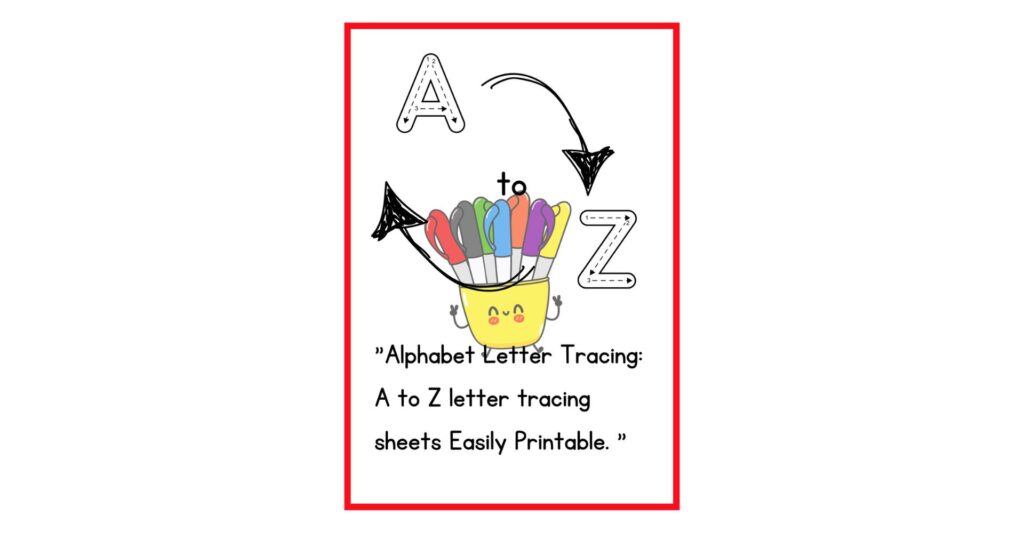
- Alphabet Games: Play some fun alphabet games! You can create a memory game using cards with letters and pictures, or play “I Spy” with letters and items around the room. For older kids, consider word-building games like Scrabble or Boggle, where they can practice forming words with the letters they know. These games make learning interactive and enjoyable.
- Alphabet Crafts: Get creative with alphabet crafts! You can have children make letters out of different materials, like playdough, clay, or even cut-out paper shapes. Encourage them to decorate their letters with stickers or drawings that represent words starting with that letter. This hands-on activity reinforces letter recognition and allows for artistic expression.
How to Craft Your Own Missing Alphabet Letters Worksheets: Create your own Missing Alphabet Letters worksheets and customize learning for your child or students. Here’s how you can craft your own:
- Template Creation: Start by creating a template with the entire alphabet written in order. Leave blank spaces where specific letters are missing.
- Randomization: To add variety and challenge, randomly select the missing letters for each worksheet. For instance, one worksheet might have missing vowels, while another might have missing consonants. This will keep your child or students on their toes and make the activity more engaging.
- Themed Worksheets: To make the worksheets even more fun and interesting, consider incorporating themes. For example, create a worksheet with a garden theme, where each missing letter corresponds to a letter in the name of a flower. This will help provide context and make the activity more visually appealing.
- Interactive Elements: To further enhance the learning experience, add interactive elements such as pictures or clipart related to the missing letters. For instance, if the missing letter is “A,” you could include a picture of an apple. This will help your child or students associate the letter with a familiar object, making it easier to remember.
Download the PDF File Here:
Click To Download the Missing Alphabet Letters Worksheet for LKG PDF
How to Print:
- Get the PDF: Start by clicking the link to download the PDF files of the worksheets.
- Set up Printing: Make sure your printer is all set up. You can adjust the settings like paper size, whether it’s portrait or landscape, and how clear you want the print to be.
- Check Before You Print: Take a print preview. To make sure everything looks just right before you hit print.
- Print: Once you’re happy with how it looks, go ahead and hit that print button.
Helpful Tips for Parents and Educators:
- Encourage and Praise: Always try to offer positive words and encouragement to children. When they do something well, let them know! This kind of praise helps motivate them and boosts their confidence. Simple phrases like “Great job!” or “I’m so proud of you!” can make a big difference in how they feel about their abilities.
- Get Involved in Learning: Make learning a fun and interactive experience! When you are with children, ask them questions about what they are learning. Give them helpful hints when they need it, and encourage them to share their thoughts out loud. This not only helps them understand better but also makes them feel valued and heard.
- Practice Regularly: Try to include learning activities, like practicing the alphabet, in your daily routine. This could be as simple as singing the alphabet song during breakfast or pointing out letters on signs while you’re out. Consistent practice helps children build a strong foundation for reading and writing skills, making learning feel natural and enjoyable.
Common Mistakes and Solutions:
- Letter Confusion: It’s very normal for young children to get confused between letters that look a lot alike, like the letters ‘b’ and ‘d’. To help them tell these tricky letters apart, you can use fun visual aids and games. For example, you could draw pictures of a bed and a dog next to the letters ‘b’ and ‘d’ to help them remember which is which. Doing lots of fun practice activities with these letters will also really help cement the difference in their minds.
- Sequence Errors: Remembering the whole alphabet in order can be really hard for some kids. If they’re struggling with this, break the alphabet down into smaller, more manageable chunks. Practice just the first few letters, like ‘a, b, c’, until they’ve got that part down. Then add on the next few, like ‘d, e, f’, and so on. Once they’ve mastered each little section, you can start putting the whole alphabet together. Going step-by-step like this makes it much easier to get the full sequence right.
- Lack of Confidence: Some children may start to doubt their abilities when learning the alphabet. It’s so important to build up their confidence by celebrating every little success, no matter how small. Praise them when they get even one letter right, and remind them that learning takes time and practice. Help them understand that making mistakes is totally normal and nothing to worry about. The most important thing is that they keep trying their best. With your encouragement and support, they’ll be alphabet superstars in no time!
Leave a Comment: We would love to hear about your experiences with our Missing Alphabet Letters worksheets! Share your thoughts, successes, and any suggestions for improvement in the comments below. Together, let’s create a supportive learning community dedicated to nurturing young minds and fostering a love for learning.
Love From Lkg Worksheets!
